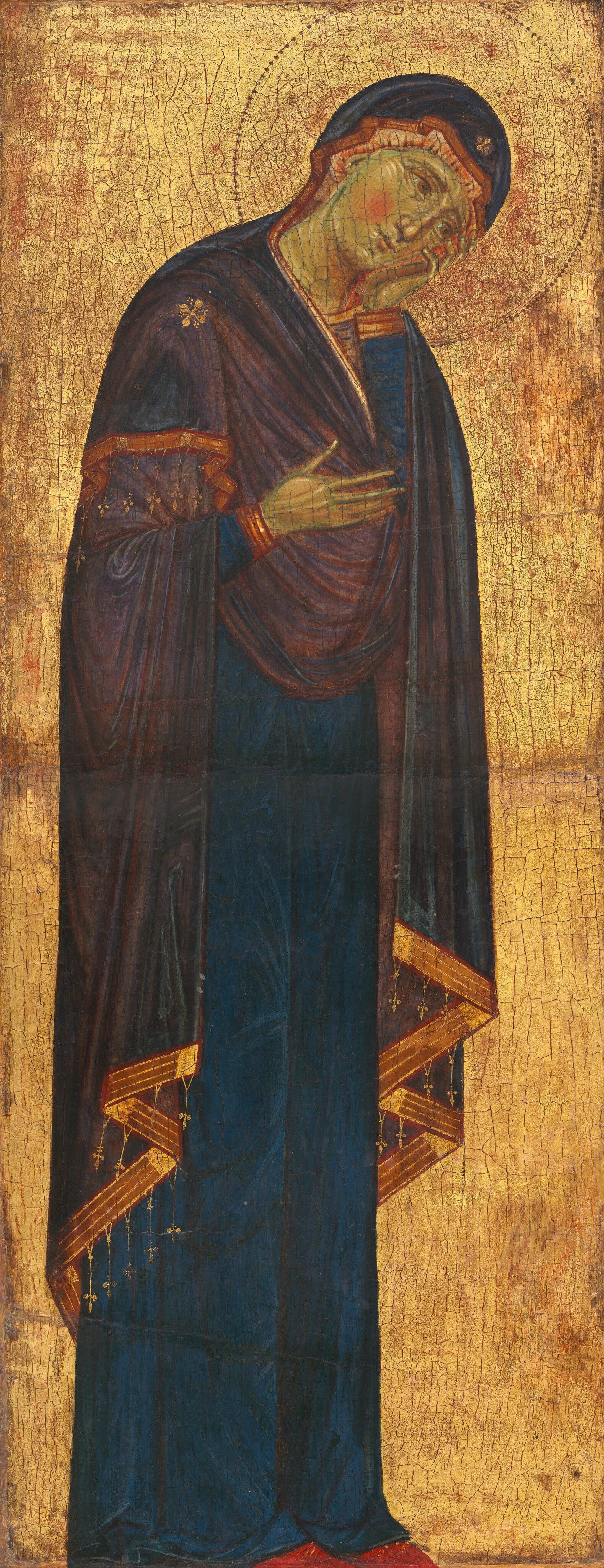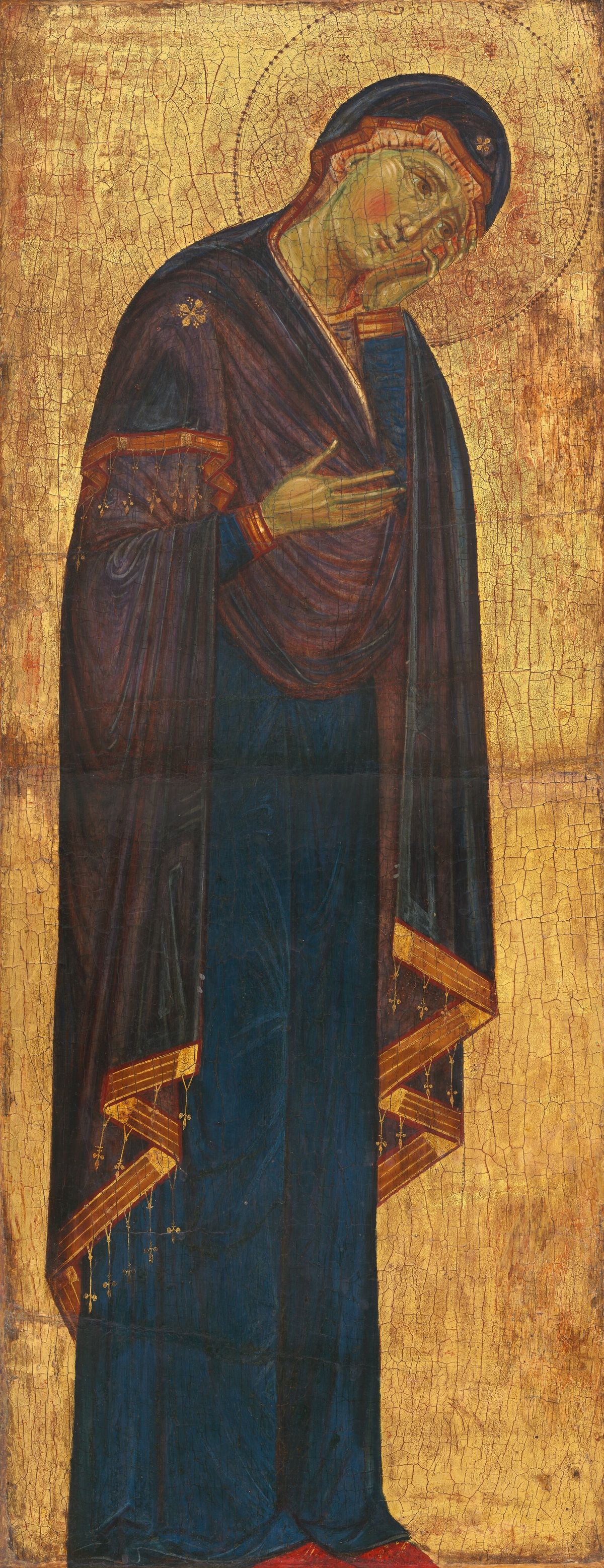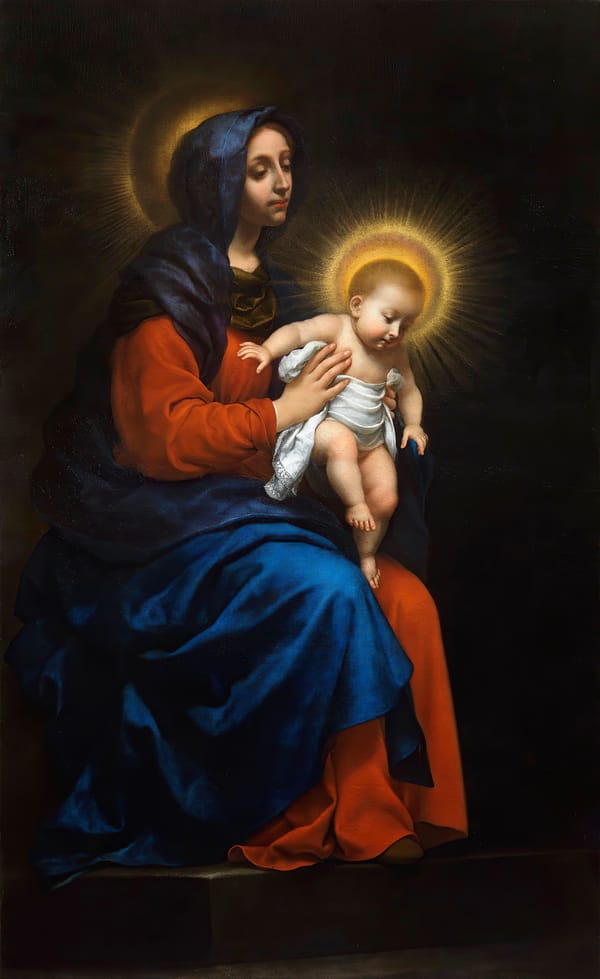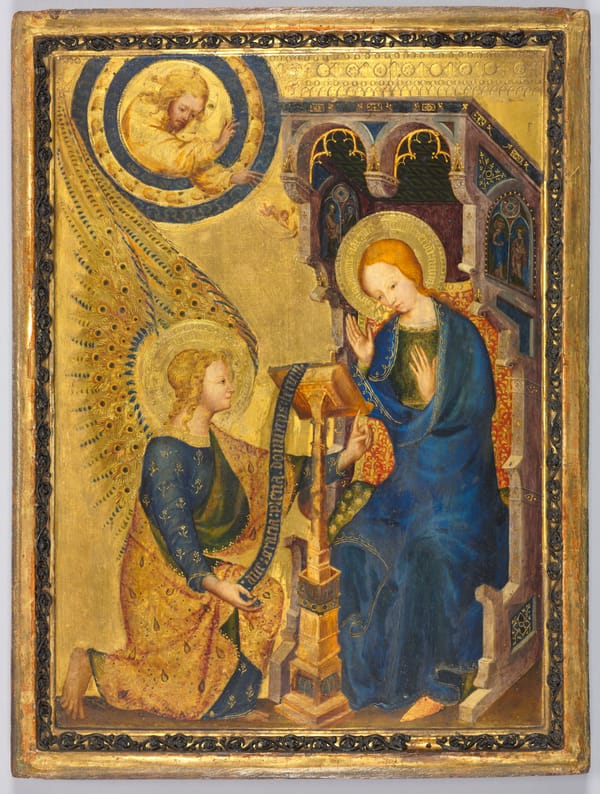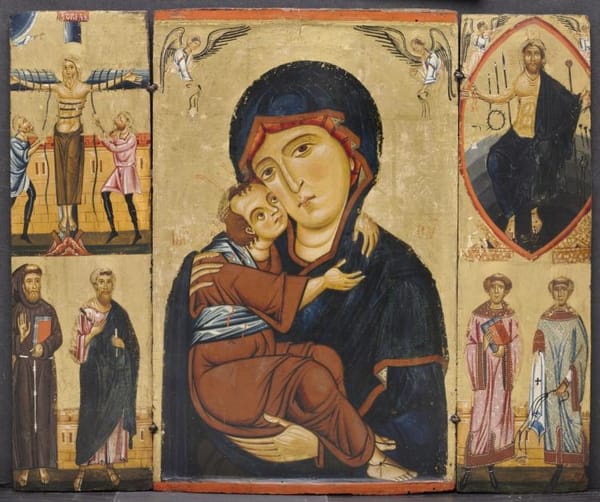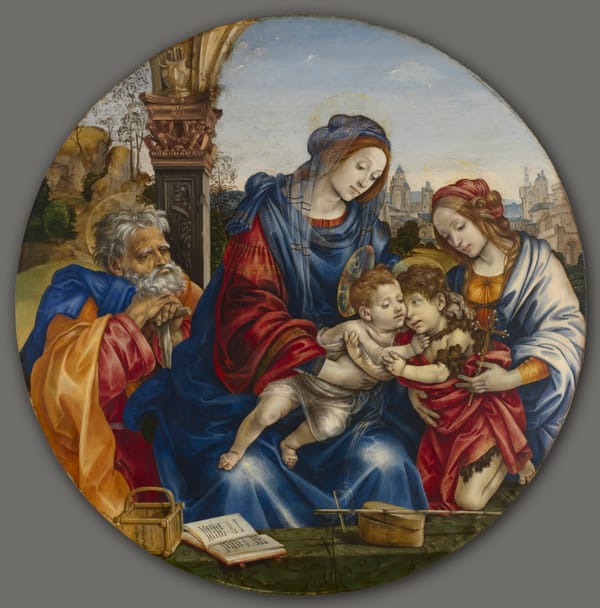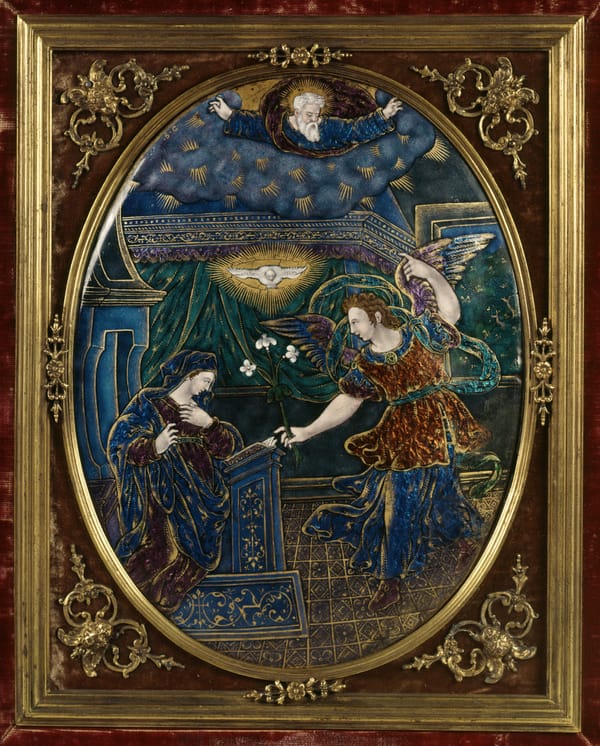The Virgin Mary bows her head and rests her cheek on her hand in a universally recognized gesture of grief. This panel and one depicting Saint John the Evangelist were originally part of a large, painted crucifix (see Reconstruction). The two mourners would have appeared at the ends of the cross’s lateral arms—Mary on the left, John on the right.
The large crucifix had long been a common part of church decoration in the West, usually suspended high above the main altar or attached to the screen that separated the altar and other areas reserved for the clergy from the nave. However, the look of the crucifix changed dramatically in the early 13th century. Earlier, it had been the living Christ who appeared on the cross, triumphant over death, often crowned. The imagery we are familiar with today--Christ’s body slumped and lifeless, his face marked by the pain he endured--is owed largely to the Franciscans and to the artists, like the anonymous master of this Madonna, who worked for them. The members of this new order of mendicant preachers sought a deeply personal and emotional connection to Christ. Looking to Byzantine models, as the magnificent patterning and gold striations in the drapery show, they developed a new powerful image that pushed viewers to identify directly with Jesus’s suffering, to become--like the Virgin and Saint John--mourners at the cross.
Free Downloads Below
Hi-Res
1200px
800px
